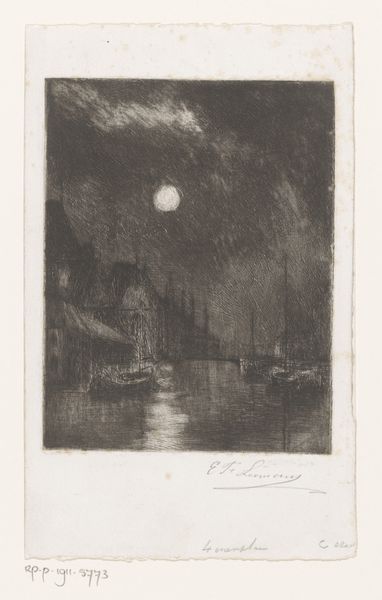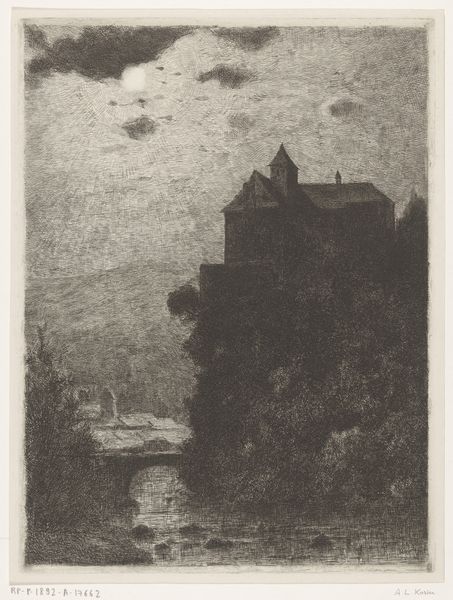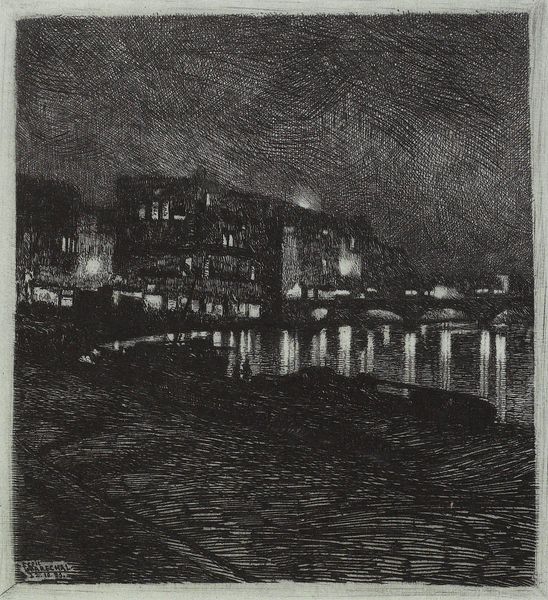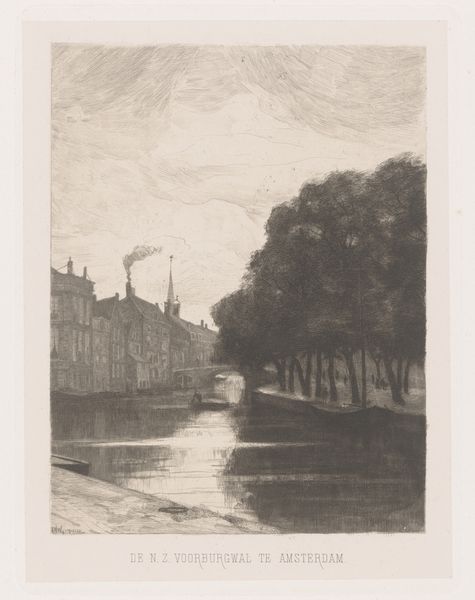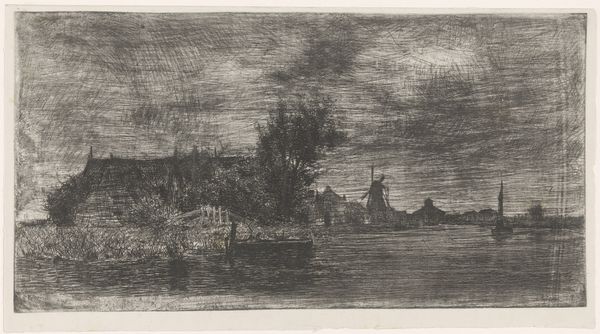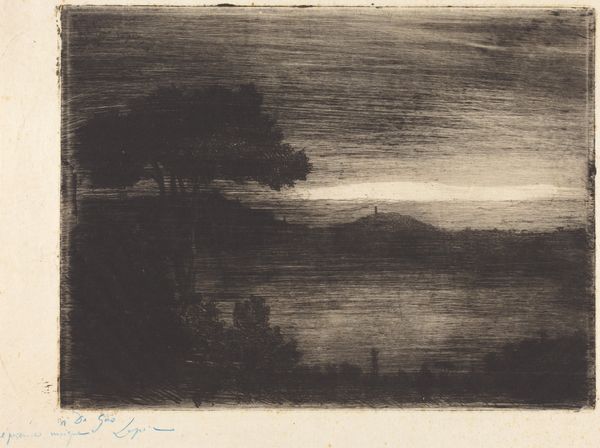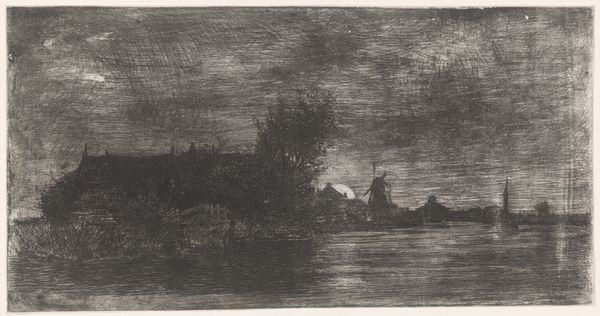
drawing, paper, charcoal
#
drawing
#
landscape
#
charcoal drawing
#
figuration
#
paper
#
form
#
line
#
cityscape
#
charcoal
Copyright: Public Domain
Curator: This arresting cityscape is titled "Dawn" by Rosy Lilienfeld. It’s rendered in charcoal on paper and currently resides here at the Städel Museum. What's your initial take on this somber scene? Editor: It evokes a sense of melancholic beauty. The heavy charcoal sky bearing the barest crescent of a moon oppresses the pale buildings beneath it, with just glimmers of light showing any sort of life. Curator: Yes, notice how Lilienfeld captures the period's anxiety by playing with light and shadow, representing a time of considerable urban growth and industrial expansion that nonetheless fostered deep social and economic divisions. Editor: Precisely. Formally, it’s about contrast. The artist uses sharp, definitive strokes to render architecture but smudges to create a blurred sky, and indistinct ground. There's no real harmony, reflecting turmoil perhaps. Curator: Lilienfeld, though lesser-known today, was a significant figure in early 20th-century art circles. Pieces like "Dawn" capture the zeitgeist - anxieties related to urbanization and shifting social structures. Look how she seems to simultaneously depict community while also expressing how these spaces can become isolating. Editor: And from a technical view, notice how she used charcoal’s natural capacity for contrast and texture, achieving a striking sense of depth that serves this emotional quality. It draws your eye from the buildings towards the sky, towards what little hope the slither of moon might provide. Curator: Her use of charcoal wasn't just technical—it allowed for a certain level of affordability that made art more accessible, reflecting the broader democratic ideals bubbling beneath the surface of that era. The choice of medium also suggests a focus on the immediacy of capturing fleeting urban moments. Editor: Right. As we look closely, one also realizes the paper provides the lightest hue available in the palette of grey values here; she masterfully used it as a tool in her tonal arrangement of shapes and forms to suggest spatial depth. Curator: “Dawn” offers a look into the artistic exploration of urban identity and the socio-political undercurrents of her time, prompting reflection on how societal shifts are depicted. Editor: Indeed. A close look at the use of material, form and technique allows one to find the artist's most elemental intent.
Comments
No comments
Be the first to comment and join the conversation on the ultimate creative platform.
